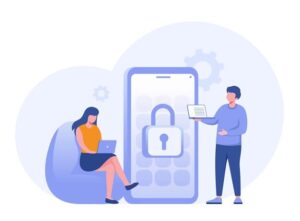Cybersecurity is the practice of protecting systems, networks, and data from unauthorized access, use, disclosure, disruption, modification, or destruction. It is important for both individuals and businesses to protect themselves from cyberattacks, as the consequences of a successful attack can be severe.

Individuals
Individuals can protect themselves from cyberattacks by taking the following steps:
Use strong passwords and enable two-factor authentication (2FA) on all of your online accounts. Strong passwords are at least 12 characters long and include a mix of upper and lowercase letters, numbers, and symbols. 2FA adds an extra layer of security to your accounts by requiring you to enter a code from your phone in addition to your password when logging in.
Keep your software up to date. Software updates often include security patches that can help to protect your devices from known vulnerabilities.
Be careful about what links you click on and what attachments you open. Phishing attacks are a common way for attackers to gain access to your personal information or devices. Be suspicious of any email or message that asks you to click on a link or open an attachment, especially if it is from someone you don’t know.
Use a security solution. A good security solution can help to protect your devices from malware, viruses, and other threats.
Educate yourself about cybersecurity threats and scams. The more you know about the latest threats, the better equipped you will be to protect yourself. There are a number of resources available online and from government agencies that can help you to learn more about cybersecurity.
Businesses

Businesses can protect themselves from cyberattacks by taking the following steps:
Implement a cybersecurity policy and train employees on cybersecurity best practices. The cybersecurity policy should outline the company’s security procedures and expectations for employees. Employees should be trained on how to identify and avoid cyberattacks.
Use a security solution. A good security solution can help to protect the company’s network and data from unauthorized access, use, disclosure, disruption, modification, or destruction.
Keep software up to date. Software updates often include security patches that can help to protect the company’s systems from known vulnerabilities.
Monitor the network for suspicious activity. Businesses should monitor their network for suspicious activity that could indicate a cyberattack. This can be done using a variety of tools and techniques, such as intrusion detection systems (IDS) and intrusion prevention systems (IPS).
Have a plan in place to respond to a cyberattack. Businesses should have a plan in place to respond to a cyberattack in order to minimize the damage and disruption. The plan should include steps for containing the attack, investigating the incident, and recovering from the attack.
Latest cybersecurity threats and trends

Some of the latest cybersecurity threats and trends include:
Phishing attacks: Phishing attacks are a common way for attackers to gain access to personal information or devices. Phishing attacks involve sending fraudulent emails or messages that appear to be from a legitimate source, such as a bank or credit card company. The emails or messages may ask the recipient to click on a link or open an attachment, which can infect the recipient’s device with malware or redirect them to a fake website.
Ransomware: Ransomware is a type of malware that encrypts a victim’s files and demands a ransom payment to decrypt them. Ransomware attacks can be very costly for businesses and individuals.
Supply chain attacks: Supply chain attacks involve targeting a company’s supplier or vendor in order to gain access to the company’s systems or data. Supply chain attacks can be difficult to detect and prevent, as they often involve trusted third parties.
Cloud computing attacks: Cloud computing attacks are becoming increasingly common as more and more businesses move their data and applications to the cloud. Cloud computing attacks can involve exploiting vulnerabilities in cloud platforms or applications, or stealing data from cloud-based storage systems.
Artificial intelligence (AI) and machine learning (ML) attacks: AI and ML are being used to develop new and more sophisticated cyberattacks. For example, AI can be used to develop phishing attacks that are more likely to fool victims, and ML can be used to develop malware that is more difficult to detect.
Conclusion

Cybersecurity is a critical issue for both individuals and businesses. By taking the steps outlined above, individuals and businesses can help to protect themselves from cyberattacks. It is also important to keep up to date on the latest cybersecurity threats and trends in order to stay one step ahead of attackers.

